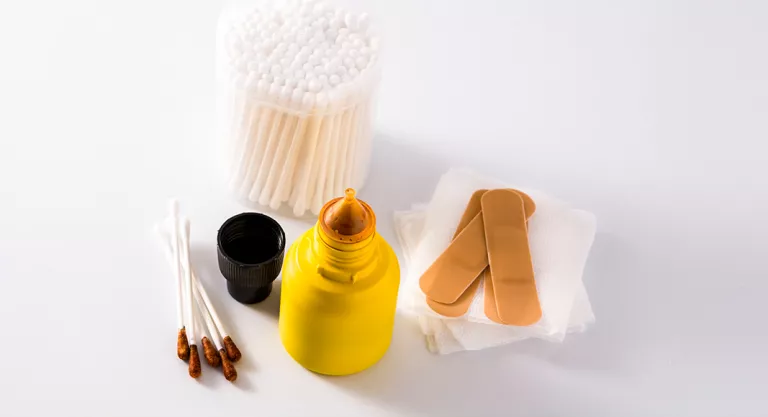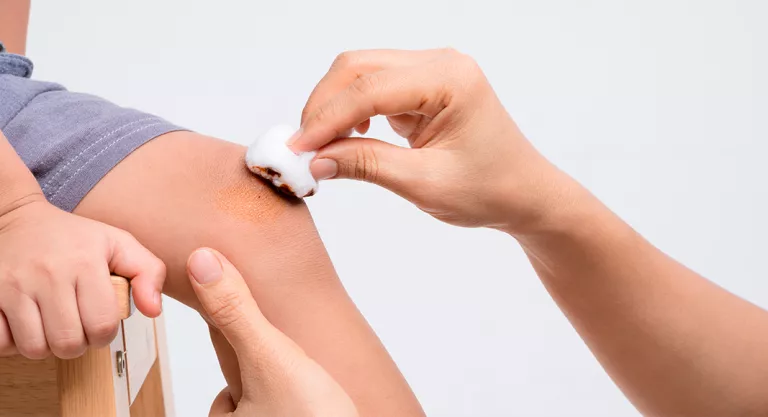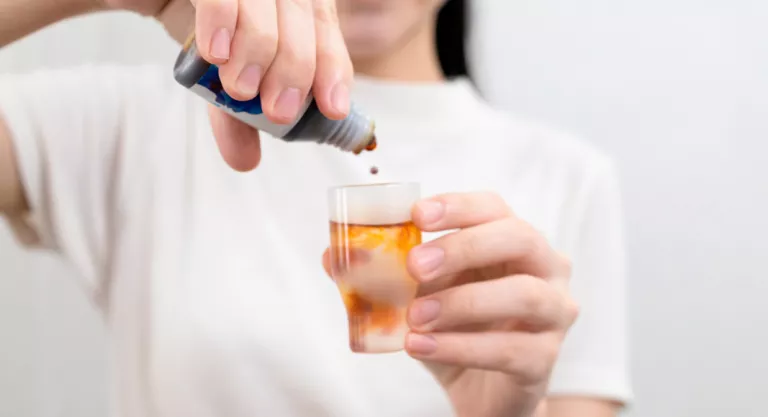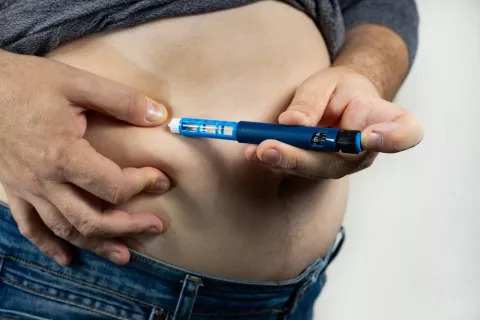Gauze, band-aids, adhesive tape, cotton… are some of the most common items in first aid kits, in addition to povidone-iodine –also known by the trade names of Betadine®, Acydona® or Heridine®–, a product of the that we all use to disinfect wounds. However, the use of this antiseptic medicine has generated a lot of controversy, we will tell you what it is, when it is used and its contraindications.
Povidone-iodine or povidone-iodine is a product made up of povidone (water-soluble polymer), elemental iodine and hydrogen iodide, as explained by Andreu Jaume Rigo Monserrat and Daphne Vázquez Planissi, expert nurses in wounds and creators of the Instagram account Cures and wounds.
Its composition is molecular iodine together with a water-soluble polymer, that is, it is an iodine carrier that releases it slowly, since iodine is the true antimicrobial agent, which penetrates the cell walls of microorganisms and through the Oxidation alters its structural proteins and nucleic acids, destroying the pathogen.
Povidone-iodine is an effective compound against bacteria, viruses, fungi, protozoa and spores that is used to disinfect small wounds
It is an effective active agent against bacteria (Gram+ and Gram-), fungi, viruses, protozoa and spores, which is why we are talking about one of the most complete antiseptics, as stated in the Guide to Antiseptics and Disinfectants of the University Hospital from Ceuta.

One of the characteristics of this iodine solution is its color, an orange-brown liquid that slightly stains the skin or any tissue on contact. Povidone-iodine can be found in a dermal solution, a gel, a shampoo, a vaginal gel, or a mouthwash, depending on what you want to use it for. Although as Andreu and Daphne warn us, many of its effects have been verified in in vitro studies, not in vivo. Therefore, it is convenient to know when to use it and when we should avoid it.
What is povidone-iodine used for?
As explained in the document from the University Hospital of Ceuta, there are many uses, both by nursing and at a domestic level, that are made of the famous Betadine® or povidone-iodine, among which is the cleaning and disinfection of:
In addition, they highlight that its microbicidal action is maintained in the presence of pus, blood, serum and necrotic tissue, therefore, it maintains its activity in infections in septic body cavities such as in the pleura, peritoneum, bone or bladder.

Its form of application is directly on clean and dry skin on the affected area with a gauze as many times as indicated by the health professional. According to Doctors Without Borders, this antiseptic begins to act 30 seconds after application, so it is recommended to respect a contact time of one minute to ensure bactericidal activity.
Contraindications of povidone iodine
However, there is some controversy about the true effects of povidone-iodine on wound healing, as many indicate that it may not help in this recovery process and also provide large amounts of iodine to the body, interfering with the correct functioning of the synthesis of thyroid hormones.
As Andreu Jaume Rigo and Daphne Vázquez explain to us, “many studies where its broad microbicidal spectrum is evident are in vitro, not in vivo, which can give non-reproducible results in humans, since there are certain proteins present in wounds that can inactivate iodine, limiting its microbicidal effect”.
The application of povidone-iodine is not recommended in pregnant women, infants, babies and people with thyroid problems
They also add that “as to whether they reduce granulation or are detrimental to wound healing, no clear conclusions have been reached, again in vitro studies have shown cytotoxicity while in vivo they have not, they have even promoted neovascularization, so More studies would be needed to have good evidence.”
The amount of povidone-iodine in 1 ml of Betadine® is 100 mg, which is equivalent to about 100,000 µg, to get an idea, the iodine in iodized salt contains 60 mg per gram. This means a high concentration of povidone-iodine, in addition to the fact that it has the ability to be absorbed very quickly and in large quantities.

That is why the application of this antiseptic solution is not recommended in people with thyroid problems, babies, pregnant or lactating women, because according to the World Health Organization (WHO) the recommendation of this mineral in pregnancy and lactation is between 200 and 300 µg of iodine daily, much higher than the amount included in povidone-iodine.
This overload of iodine can temporarily block the thyroid, since it needs the mineral to synthesize hormones and in the event of an excess, it inhibits uptake and stops working properly, causing hypothyroidism. For example, iodine in umbilical cord blood increases by up to 50% in those women in whom povidone-iodine is applied before delivery. This causes the amount of iodine in breast milk to increase up to 10 times in the days after delivery.
A safe alternative to replace povidone-iodine in the medicine cabinet is chlorhexidine
Consequently, the baby could receive large amounts of iodine which, as we have mentioned, would cause temporary hypothyroidism, which would affect proper brain development. For all these reasons, experts do not recommend using povidone-iodine in any situation during pregnancy, lactation or during early childhood.
From the Spanish Agency for Medicines and Health Products (AEMPS) they indicate that “regular or prolonged use of this medicine should be avoided, especially in patients with burns that affect more than 20% of the body surface, large or open wounds, kidney failure , thyroid disorders and in patients receiving lithium treatment.
Alternatives to the use of povidone-iodine
“No antiseptic should be used routinely, because they can be cytotoxic, delay healing, can have skin reactions, allergies… If antiseptics should be used when a wound is dirty, colonized or infected, or also when you want to avoid bacterial proliferation, such as, for example, in arterial injuries, since, in this case, iodine dries the area due to its astringent composition”, clarify the authors of the account Cures and wounds.
In addition, these experts give us some alternatives to replace povidone-iodine, at home it can be replaced from the medicine cabinet with chlorhexidine and in the health field, prontosan (PHMB) and microdacyn (hypochlorous acid) are being used.
Betadine, use against COVID-19?
In recent months, there has been much talk about whether povidone-iodine rinses could help reduce the viral load of COVID-19, reducing the level of contagion of respiratory droplets expelled by an infected patient. And it is that since 2018 several studies have been carried out that have shown that povidone-iodine is a powerful virucidal agent, although we clarify that these tests have been carried out in vitro.

In 2015, a study published in the journal Infectious Diseases and Theraphy concluded that the application of povidone-iodine in vitro was able to reduce the titers of the MVA (Modified Vaccinia Ankara) and MERS-CoV (Middle East Respiratory Syndrome) viruses, inactivating the virus above 99% after 30 and 15 seconds of application of the product in mouthwash format with a concentration of 1%.
There is not enough scientific evidence to support the widespread use of povidone-iodine mouthwashes against SARS-CoV-2
In the case of SARS-CoV-2, a study published in the Journal of Prosthodontics indicated that “povidone-iodine oral antiseptics at all tested concentrations of 0.5%, 1%, and 1.5% completely deactivated the SARS-CoV-2 within 15 seconds of contact.” However, this test was done in cultures, so it cannot yet be extrapolated to the human case.
Precisely, another Spanish study published in the journal Oral Diseases, tested the effects of povidone-iodine mouthwashes in four patients with coronavirus, and found that in two of them the viral load had been significantly reduced, and in another two it was maintained at same level.
However, there is not enough scientific evidence to support the widespread use of povidone-iodine mouthwashes against SARS-CoV-2, since most of these studies lack a control group and have few participants. Even so, from the Higher Council for Scientific Research (CSIC) they report that two researchers are already underway with a trial to determine the usefulness of oral rinses with 3% hydrogen peroxide and povidone-iodine in reducing oropharyngeal viral load of SARS-COV-2.
.









